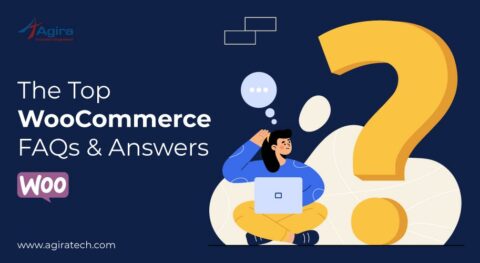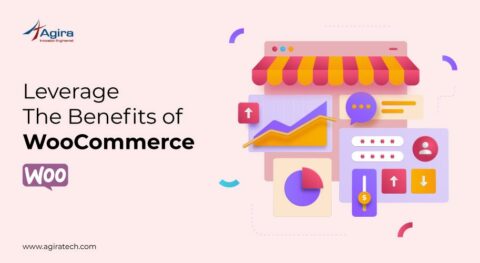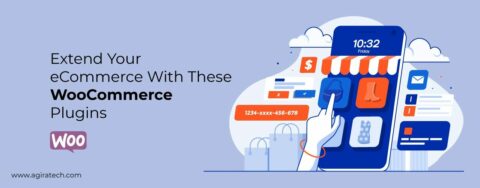WooCommerce is WooThemes’ enterprise-level eCommerce platform, which WordPress has recently bought. It allows you to add premium extensions to the basic installation, allowing you to customize it in various ways. Here’s a brief of how to sell on Woo-commerce and what are the top features that help you run your business smoother.
Sucuri, a WordPress security firm, has fully inspected the platform, including comprehensive store management, extensive reporting options, and simple one-page checkout with several payment gateway options. Many marketing and promotion options are also available.
These features are only the tip of the iceberg when it comes to WooCommerce’s capabilities. While it meets the demands of many online shops out of the box, with the various premium extensions available, you should be able to create a store that meets all of your requirements.
How to Install WooCommerce
Ensure to check if your current theme is WooCommerce compatible before installing WooCommerce. Make sure to check if the theme includes WooCommerce as a feature. If you’re planning to start a store, we strongly advise you to invest in a premium theme. It guarantees that your theme is always compatible with the most recent WooCommerce version.
How to Configure WooCommerce
It’s time to start customizing your store now that you fully install the plugin. There are several choices available in the WooCommerce > Settings menu. Let’s have a look at the settings available under each tab.
General
This page, as you might imagine, contains some of your store’s basic setup. Location, API, and currency choices are all available in this area.
Products
This section contains all of your product’s many settings. It covers measurement units, reviews, goods and shops, cropping of product images, inventories, and downloadable products.
Tax
There are several ways to calculate tax rates, and they may become rather complicated. Before diving into this part, we recommend reading the WooCommerce instructions on setting up taxes.
Checkout
You may customize your cart and checkout pages, add terms and conditions, and choose your payment gateways from this page. WooCommerce has choices for bank transfers, cheques, COD, PayPal, and credit cards. However, there are several third-party plugins and extensions available to incorporate other payment gateways.
You may also allow coupons from here. Coupons and discount coupons may be an excellent method to entice returning consumers to buy with you. Many online shops provide discounts to newsletter subscribers or returning customers.

Shipping
It is where you may customize every part of your store’s shipping procedure when you sell physical products on Woo-commerce. You can activate and customize the following shipping options in addition to the display choices for shipping calculations.
Choose your shipping methods, establish flat prices, activate free shipping, add international shipping choices, and customize local pickup and delivery options. You may enable each of these settings separately and customize every aspect of the delivery methods you employ.
Accounts
Settings for your user accounts page, adding custom URLs for essential account pages and enabling/disabling accounts and registration are all available on the accounts page.
You may customize the email choices and templates used to communicate with your customers in this area. Emails may be sent in response to various events, including new, processed, or completed orders, invoices, password resets, and more.
Webhooks
When users add a product to their shopping cart, webhooks trigger events, such as displaying a popup with a promotional code. This section simplifies WooCommerce’s interaction with third-party plugins that you might wish to utilize to enhance WooCommerce’s capabilities.
How to sell products on Woo-commerce?

Adding Your Products
It’s time to start adding goods to your store now that you’ve completed the store configuration. The procedure of generating a product in WordPress is nearly identical to that of writing a regular blog article.
You may categorize and tag your items and add shipping classes to sort them into groups based on their shipping needs. Additional features, such as various colors or sizes, can be added to your goods.
When you add a product, it’ll redirect to a page that looks similar to the regular post page but has a few extra features.
Product Data
This area lets you customize every aspect of the product. You may pick from four product types: simple, grouped, external/affiliate, or variable. The only product type that allows you to produce a digital download or a virtual product is the primary product type.
Each product should have an SKU, which serves as a unique identifier for stock management choices. It is where you specify the product’s pricing, any other features it may have.
There’s also a significant part where you link additional items to up-sell and cross-sell to your consumers. It is an excellent approach to persuade your consumers to purchase extra items from you. Amazon is a master of this strategy, and it’s worth looking at how they handle product linking to see how you might boost your sales.
Product Short Description
On the actual product page, this is the text that will appear next to your product image. It is an excellent place to provide a few short lines or a bulleted list of your product’s benefits.
Product Gallery
It’s typically a good idea to provide a few images of whatever you sell on your woo-commerce store. So that buyers may inspect it before making a decision. We’ve improved the gallery in our Chic theme to include a gorgeous image lightbox, making it even more straightforward for your clients to browse your galleries.
Reporting
After your store is up and running and you’ve sold a few items, you should check out WooCommerce’s reporting features. You may access these under WooCommerce > Reports in the WooCommerce menu.
Some reports show your sales by day, month, product, category, top sellers on the woo-commerce store, and earners.
It also offers data for the usage of discount coupons and different information on your consumers, in addition to your product sales. There’s also a section that keeps track of your low and out-of-stock items.
These reports are an excellent method to keep track of every element of your company. This feature allows you to identify your best-selling goods on the Woo-commerce store and will enable you to see which ones aren’t.
This type of information can help you make more lucrative selections. Knowing all of this data is critical to running a successful business, and WooCommerce provides you with all the information you want.

A Simple One Stop Solution
There are a lot of e-commerce plugins for WordPress, but WooCommerce is one of the finest. It’s free, and it has more features than many paid eCommerce plugins. Sell your products on Woo-Commerce now! Hire WooCommerce developers and experts for developing WooCommerce website, store, and custom plugin development from one of the reliable and trustworthy companies, Agira technologies.










